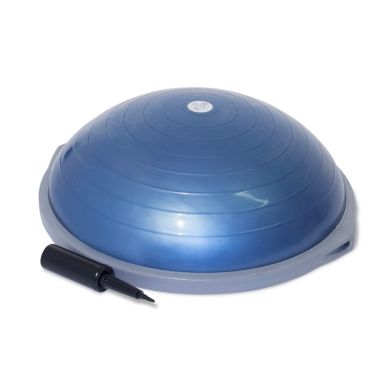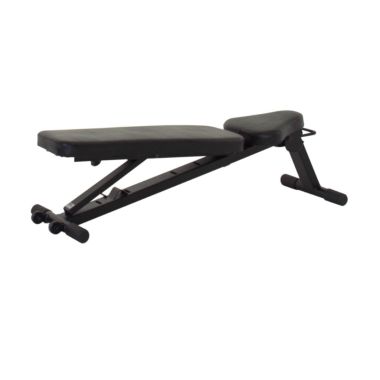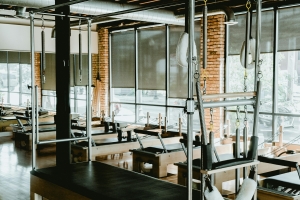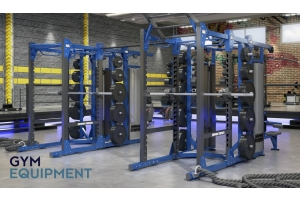Core Stability - Part 2

How Do You Monitor Core Stability? It is widely believed that core stability work is important as it reduces injury and improves performance but what scientific evidence is there to support this theory?
A study by Chaudhari carried out in 2011 with a group of 75 healthy professional baseball pitchers, used a measurement device which allowed the observation to be made that professional baseball pitchers with poor core stability did not perform as well as those with better lumbopelvic control. Thereby providing some scientific evidence to support this belief.
In order to achieve maximum athletic performance, control and strength of the body's back, abdominal and hip muscles is essential. However the question remains, how can we tell if core stability is being maintained?
The measurement device used in the Chaudhari study provides audible feedback to alert the user when the body goes out of alignment and core stability is not being maintained. The device is called "Level Belt Pro" or "Level Belt Lite" and is an iPhone application which is available from the iPhone "App Store". If you do not have an iPhone then a package can be secured from the “Perfect Practice” website. This simple device is a breakthrough in core stability training and testing and is also easy to use, making it available to all.
The Next Step
If you have successfully (and comfortably) learned to recruit the TA and MF muscles correctly in various positions you are looking at anything from one session to one month or more. It is then time to move onto simple core stability exercises. These exercises may involve the oblique muscles, other lumbar muscles and gluteals in order to assist the TA and MF in maintaining the lumbar spine in the neutral position, stably.
Lying leg lift stabilisation
- Lie on your back with knees bent
- Make sure your back is in the neutral position
- Place your hands on your hips
- Breathe in and relax
- Breathe out and, as you do this, perform the abdominal hollowing action
- Once some TA tension has been established, slowly slide your left leg out along the floor until it is straight and then slide it back
- Your pelvis should not have tilted and your back should not have moved, as you performed this action
- If your back or pelvis has moved, you did not achieve the correct stability
- Repeat for the other side 10 times each leg
Variations include the same exercise but with knee lifts up and knee drops out to the side. Once again, the aim is to be able to retain a stable lumbar spine in the neutral position as your legs move.
The Waiter's Bow
- Stand up with good posture, keeping your knees soft, lumbar spine in the neutral position, with your head up, shoulders back and staying relaxed
- Breathe in and relax
- Breathe out and at the same time perform the abdominal hollowing action
- Keeping the tension, slowly lean forward from your hips 20° and stop, like a waiter's bow, try to keep your back completely straight and long as you lean
- Hold this lean position for 10 seconds - you will feel your TA and MF muscles supporting you if the position is held correctly
- Continuing to keep the tension and the alignment, slowly return to the start position
- Repeat 10 times
These exercises are two examples of learning how to keep the spine in the neutral position, and using controlled and slow static contractions of the trunk stabiliser muscles. Technique is vital during these exercises and the aim is to build up the time you are able to maintain good stability.
Getting Functional
Controlling the lumbar spine during dynamic movements such as lifting a heavy box or participating in any sport is a result of the deep trunk muscles working effectively, which is the ultimate aim of core stability training.
Thereby, it is important that once you have achieved proficiency of the simple core exercises, you are able to progress on to achieving stability during more functional movements, such as the following exercises listed.
The Lunge
- Stand with your feet hip width apart in front of a mirror
- Ensure your lumbar spine is in neutral and your back is tall with your head up and shoulders back
- Lunge forward, bending your knee only halfway down
- Ensure that your front knee is in line with your toes and that your back has remained upright with your lumbar spine in neutral and your hips are level
- Push back up, push down into the floor with your front foot to initiate the movement
- The force from your legs should then bring you back up quickly and easily back to your start position
- Your back should have remained completely still with your hips level as you performed the push back motion
Many people initiate the up movement by pulling their heads and shoulders back first, however this is incorrect and extends the lumbar spine which causes the neutral position to be lost. Other people have problems keeping their pelvis level whilst performing the lunge.
To avoid this, you must learn to use your deep trunk and gluteal muscles so that your lumbar spine neutral position is held and pelvis is level as you perform the movement up and down. It is important to remember that this movement should only come from the leg muscles.
The Press Up
- Start from your knees, even if this means it is easy for your upper body because it allows you to learn the correct technique
- Your head must be in front of your hands with your hands slightly wider than your shoulders
- Lift your hips to create a straight line from your knees through your pelvis, lower back and through your shoulders and then all the way to your head
- Either using a partner or a trainer to help you, ensure that your lumbar spine is in neutral
- The trunk muscles must provide active support to maintain a neutral spine and a straight back during this exercise
- Slowly lower down, bending your arms all the way to the floor. With your neck straight relative to your back, keep your head sill
- To push up, initiate the movement by pressing down into the floor with your hands
Throughout the exercise, your back should remain straight and your lumbar spine in neutral.
The Importance of These Two Exercises
These two exercises enable you to learn core stability while performing dynamic movements. You are able to focus on the trunk stabilisers and achieving perfect technique rather than working the major muscle groups by reducing the resistance, for example doing only half lunges and knee press ups.
Ultimately, core stability training is quality of movement and relaxation. The more you practice, the easier it becomes until you are able to control your lumbar stability at all times, including during complex movements.





